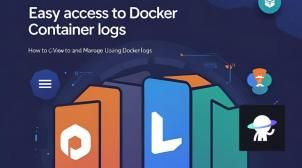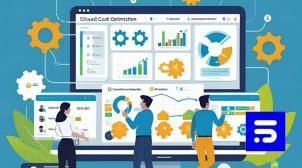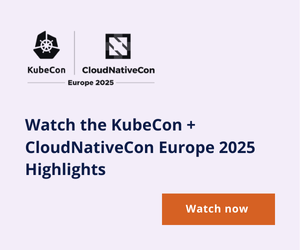-
Diskless Kafka is the Tide, and it’s Rising
Discover KIP-1150 Diskless Topics now live in Aiven Kafka BYOC, enabling Apache Kafka on AWS, Google Cloud, and Azure to write directly to object storage. Learn how this innovation slashes costs by up to 80%, eliminates operational toil, and maintains 100% Apache Kafka compatibility, ensuring zero vendor lock-in and a single logical cluster for all streaming workloads.
-
Docker Container Logs: How to View & Manage
Easy access to Docker container logs is essential for effective development and debugging. This guide explores how to view and manage Docker logs using the docker logs command, Docker Compose, and Docker Desktop. It also covers where logs are stored, how to clear them, and best practices for centralized logging, log rotation, and structured output. Whether you're just starting with Docker or optimizing a production setup, this article will help you tailor container observability to your needs.
-
DoiT Uplevels Kubernetes Capabilities with Acquisition of PerfectScale
Explore containerization, Kubernetes, and cloud optimization for scalable, cost-effective, and efficient operations.
-
Driving Beyond Visibility: Why Action Is the True Currency of FinOps
In the 2025 State of FinOps report, workload optimization and waste reduction once again top the list of priorities—but this time, it's about action, not just visibility. As FinOps matures, the focus is shifting from simply identifying inefficiencies to systematically fixing them through built-in workflows, context-rich insights, and tighter engineering integration. This article explores how governance, automation, and cultural alignment are shaping the next frontier of FinOps—where every dollar saved is tracked, verified, and sustained at scale.
-
Effortless SBOM Analysis: How Anchore Enterprise Simplifies Integration
As software supply chain security becomes a top priority, organizations are turning to Software Bill of Materials (SBOM) generation and analysis to gain visibility into the composition of their software and supply chain dependencies in order to reduce risk.
-
Enterprise Open Source AI: Navigating Risk, Securing Innovation, and Owning Your Destiny
As AI adoption surges across industries, organizations face critical decisions about how to manage innovation, risk, and control. Open source AI offers enterprises the ability to “own their destiny” — providing transparency, flexibility, and customization that proprietary models often lack. However, with these benefits come challenges: security vulnerabilities, model drift, and cultural shifts in AI literacy. To succeed, businesses must build secure infrastructure, foster cross-functional collaboration, and establish governance pathways that empower safe innovation. The future belongs to cybernetic businesses — and those that proactively shape their AI strategies today will lead tomorrow.
-
Evolution of IoT Architectures from Simple Device-Cloud Models to Edge-Based Systems
Discover how IoT architectures evolved from cloud-only models to edge-based systems that boost speed, scalability, and real-time decision-making.
-
Explore what’s important when running data workloads on Kubernetes
Not long ago, Kubernetes aimed primarily to serve stateless workloads. Explore what’s important when running data workloads on Kubernetes.
-
Expressions in Terraform
Expressions are one of the most powerful features of any programming language and Terraform is no expection. Version 0.12 added more powerful features.
-
FinOps in 2025: The 6 Phases of FinOps Evolution
Explore the six evolving phases of FinOps, from the initial "Observational" data collection to "Automated" and the future of "Integrated FinOps," revealing how organizations learn to manage cloud spend and optimize infrastructure efficiently over time.
-
Fintech Company Streamlines Software Supply Chain Management for Enhanced Security
This leading financial services technology company has significantly improved auditability and traceability, streamlined its security technology tool stack, and strengthened its end-to-end software supply chain security by adopting JFrog Advanced Security.
-
Fintech Developer Streamlines Software Production with JFrog’s Release Lifecycle Management
A multinational financial technology firm improved security and compliance by adopting the JFrog Platform for software releases. Using immutable release bundles and controlled promotion, they minimized risks while maintaining strict regulatory standards. JFrog’s Release Lifecycle Management (RLM) capabilities reduced manual intervention, allowing teams to focus on innovation.
Filter & Sort



















